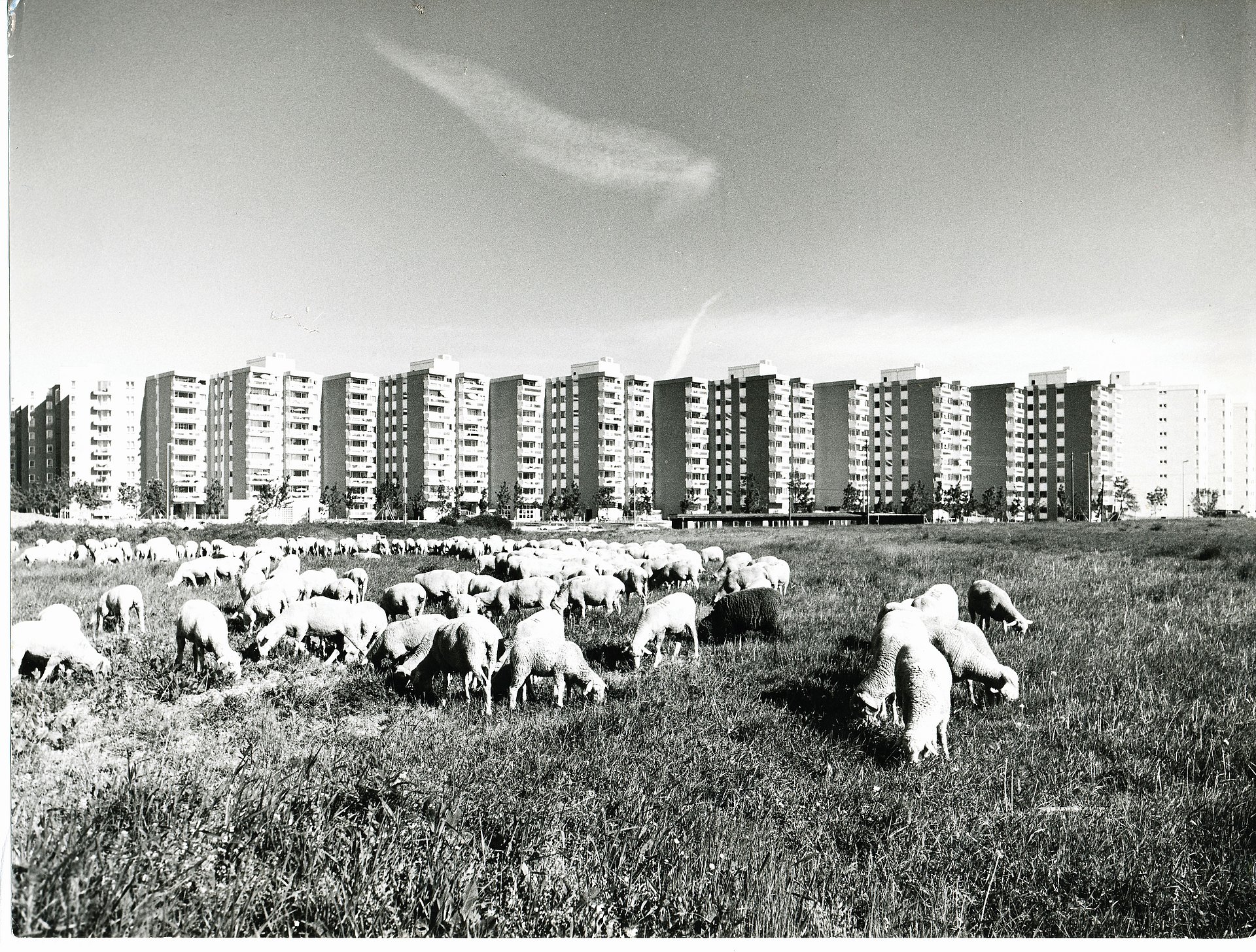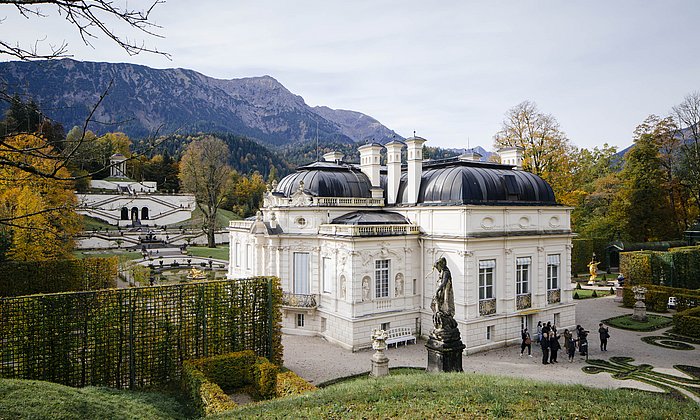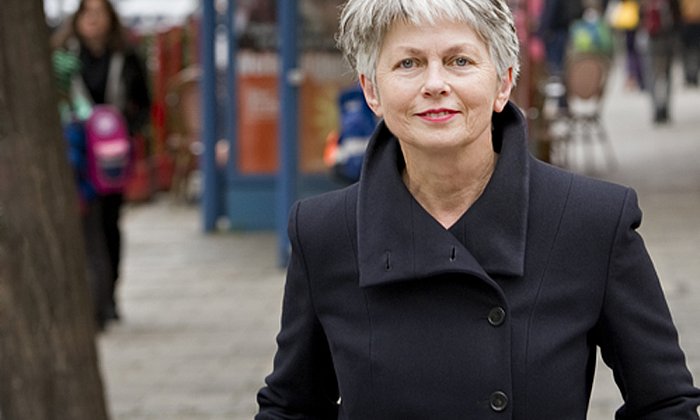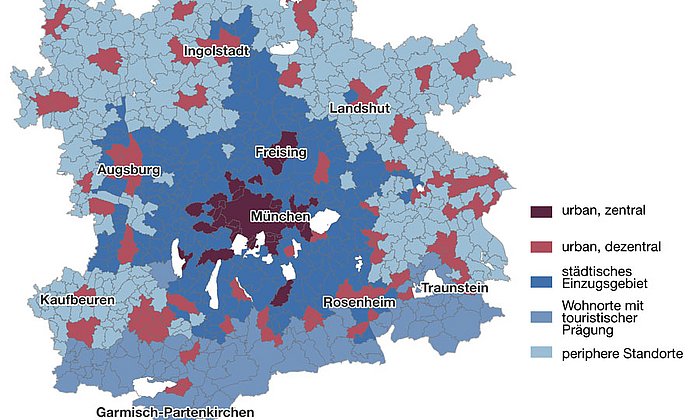Interview with Prof. Andreas Hild about his book "Neuperlach ist schön"
Embracing the satellite town

The title of the book you dedicated to Munich's largest satellite town Neuperlach on its 50th birthday describes this neighborhood as beautiful. For many Munich residents, this certainly sounds provocative ...
However, current attitudes have less to do with Neuperlach than with the common preconceptions about such large subdivisions. Neuperlach was once seen as a problem neighborhood. That's hardly surprising when one recalls that 55,000 people arrived there all at once.
And now?
In the meantime, Munich's populated area has spread out and is more closely linked to the former satellite town. The infrastructure has also improved: When Neuperlach was built, it was not yet connected to the city's subway system, for example. Today many of those who live there feel very much at home – thanks, for example, to the attractive floor plans of the apartments and the relatively high quota of green space.
What makes Neuperlach beautiful?
In our study we used a collection of photographs to illustrate some of the area's hidden beauty spots. For example, the circular space at Theodor-Heuss-Platz could certainly be described as "beautiful". When you stand in the middle of this large space and experience its uniqueness, you realize that it's something special. This is the modernist vision of the landscaped city. In general, what we call "beautiful" is a question of personal attitude. I might feel that Neuperlach is "not beautiful", but the people living there associate it with their own wishes, dreams and memories.
What is it that fascinates you personally about this built utopia, as you refer to it?
When Neuperlach was planned from the early 1960s, there was an amazing sense of a new departure. The construction of this residential area, which marked the midpoint between reconstruction after the Second World War and the 1972 Olympic Games in Munich, was an incredible social achievement. Back then, there was a willingness to tackle problems and solve them. We could learn a lot from that spirit of optimism today.
Why aren't we building satellite towns like Neuperlach today to address the acute housing shortage?
Today's housing shortage is quite comparable to what Munich experienced in the 1950s. The answer back then was to build what were referred to as "relief towns" such as Neuperlach. But today there are no longer any potential construction sites on that scale in the metropolitan area. Neuperlach has an area of almost 1,000 hectares. By contrast, new developments such as Freiham cover just 100 or at most 200 hectares. Now is a good time, however, to consider how Neuperlach can be used as an urban development resource. Today the old subdivisions are in need of renovations and upgrades. Naturally, as a professor of Architectural Design, Rebuilding and Conservation, I am very interested in those issues.
What do you propose?
One could build more housing in Neuperlach. Although the subdivision was designed to provide homes for a lot of people, the construction density is surprisingly low. Maxvorstadt and other much-beloved districts in Munich actually have three times the housing density. In Neuperlach it is not especially easy to provide the infrastructure, shops and other social services that people value so much in Maxvorstadt. To make such offerings more economically viable in Neuperlach, it would be advisable to increase the density. Bringing more people into Neuperlach could improve the situation of the people living there while helping to solve part of Munich's shortage of space. The original plan for Neuperlach was to house 80,000 people. And that is still conceivable today.
Could that be a solution for other satellite towns?
Our book is not just a hymn of praise for Neuperlach. We want to explore districts of this kind throughout Germany. Neighborhoods such as Chorweiler in Cologne and Neue Vahr in Bremen have comparable structures and similar potential.
Publication:
Hild, Andreas; Müsseler, Andreas: "Neuperlach ist schön. Zum 50. einer gebauten Utopie" [Neuperlach is beautiful. On the 50th anniversary of a built utopia], Franz Schiermeier Verlag, Munich, 2018.
More Information:
The exhibition "Die Neue Heimat (1950 – 1986)" will take place from February 27 to May 19, 2019 at the TUM Architecture Museum. Die Neue Heimat was the largest non-governmental residential construction company in post-war Europe. It was owned by the German Trade Union Confederation (DGB). Over a 30-year period, the union-run company planned and built more than 400,000 housing units in Germany – including in Neuperlach. The exhibition focuses on the Neue Heimat architects and urban planners and their influence on residential and urban construction.
Contact:
Prof. Andreas Hild
Technical University of Munich
Professorship of Architectural Design, Rebuilding and Conservation
Tel: +49 89 289 22861
andreas.hild@eud.ar.tum.de
High resolution images:
Technical University of Munich
Corporate Communications Center
- Lisa Pietrzyk
- lisa.pietrzyk@tum.de
- presse@tum.de
- Teamwebsite


